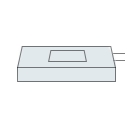Fiber Optic Tech
In-depth Application and Future Prospects of Optical Switches in Fiber Optic Sensing Technology
The application of optical switches in fiber optic sensing represents a deep integration of cutting-edge optics and precision sensing technologies. This field not only demonstrates the rapid advancement of modern optical communication but also brings unprecedented flexibility, reliability, and intelligence to fiber optic sensing systems. As a core optical path control device, the primary function of an optical switch is to perform physical switching or logical operations on optical signals in transmission lines or integrated optical circuits. In fiber optic sensing systems, this capability is fully leveraged to enable multi-point monitoring, optical path switching, signal modulation and demodulation, and other advanced functions, significantly expanding the scope and performance boundaries of fiber optic sensing applications. For instance, in distributed fiber optic sensing networks, optical switches dynamically route signals from multiple sensor nodes, enabling synchronized acquisition and real-time analysis of parameters such as temperature, strain, and vibration—critical for environmental monitoring, industrial safety, and infrastructure maintenance. Overall, the integration of optical switches enhances system response speed and integration density while reducing power consumption and cost, driving fiber optic sensing from traditional single-point detection toward intelligent, multi-functional networked systems.
Basic Principles and Types of Optical Switches
The fundamental principle of optical switches lies in utilizing various physical effects—such as mechanical motion, electro-optic effects, or thermo-optic effects—to control the propagation path of optical signals, achieving on/off switching or redirection. Core components typically include input/output ports, optical elements (e.g., mirrors, prisms, or crystals), and actuation mechanisms. Common configurations include 1×N (one input to multiple outputs), 2×2 (two inputs and two outputs, supporting parallel or cross connections), M×N (multi-input multi-output matrix), and large-scale array switches. By cascading these basic units, large-scale optical switching fabrics can be constructed to meet the demands of high-density fiber optic sensing systems. For example, a 2×2 optical switch can use electrostatic force to rotate a micro-mirror, redirecting an input optical signal from one port to another with minimal loss.

Optical switch technologies are highly diverse, mainly categorized into mechanical, micro-electromechanical systems (MEMS), thermo-optic, liquid crystal, electro-optic, and acousto-optic types. Among these, mechanical optical switches rely on physical movement of components—such as step-motor-driven prisms or fiber alignment mechanisms—and offer low insertion loss and excellent stability, though with slower response times (typically milliseconds). They are suitable for multi-channel monitoring systems where speed is not critical. MEMS optical switches, however, stand out due to their miniaturization advantages. Fabricated using silicon-based micromachining, they employ micro-mirror arrays actuated by electrostatic, electromagnetic, or thermal forces to tilt, rotate, or displace mirrors, thereby altering the light beam direction. These switches are compact (millimeter-scale), highly integrable, and fast (microsecond to nanosecond switching), with superior performance metrics: low insertion loss (<1 dB), low crosstalk (<-60 dB), and high extinction ratio (>50 dB). They are widely adopted in high-speed fiber optic sensing networks. Thermo-optic switches change waveguide refractive index via heating but consume more power; liquid crystal switches control polarized light through molecular reorientation under electric fields, ideal for polarization-sensitive applications; electro-optic switches leverage electric-field-induced refractive index changes for rapid response; and acousto-optic switches use sound-wave-generated diffraction gratings for wavelength-selective routing. The choice of technology depends on the specific sensing scenario—for example, MEMS or acousto-optic switches can double the sensing range in distributed temperature sensing systems.

Characteristics and Application Fields of Fiber Optic Sensing Systems
Fiber optic sensing technology uses optical fibers as both sensing elements and transmission media. It detects external physical quantities (e.g., temperature, pressure, strain, vibration) by measuring changes in optical wave parameters—amplitude, phase, polarization, or wavelength—during propagation. Compared to conventional electronic sensors, fiber optic sensing offers distinct advantages: ultra-high sensitivity (nanometer-level resolution), strong electromagnetic interference immunity (suitable for high-voltage or strong magnetic environments), wide dynamic range (from weak to intense signals), long-distance remote telemetry (tens of kilometers), corrosion resistance, and intrinsic safety (no electrical signals, explosion-proof). Additionally, these systems are compact, lightweight, and easily integrated into complex structures.
Applications span numerous domains: military and defense (missile guidance, border surveillance), aerospace (aircraft structural health monitoring), mining and industry (mine safety, equipment vibration detection), energy and environmental protection (oil/gas pipeline leak detection, wind turbine strain analysis), industrial automation (robotic arm precision positioning), biomedical engineering (in-vivo temperature/pressure monitoring), metrology (high-precision optical measurements), civil engineering (bridge/tunnel deformation monitoring), and consumer appliances (smart home environmental sensing). In these contexts, optical switches serve as critical enablers by: constructing multi-point distributed monitoring networks via dynamic path switching; enhancing system flexibility through real-time reconfiguration; ensuring reliability with backup paths; and supporting advanced signal processing, such as wavelength selection and demultiplexing in wavelength-division multiplexing (WDM) systems. These capabilities improve overall efficiency, reduce maintenance costs, and enable the transition from passive monitoring to active, intelligent response.
Specific Applications of Optical Switches in Fiber Optic Sensing
Optical switches enable a wide range of applications in fiber optic sensing. The following sections detail key use cases, highlighting their fast switching and low-loss characteristics.
1. Multi-Point Monitoring Systems: In distributed fiber optic sensing, optical switches are essential for building efficient multi-point monitoring networks. By connecting multiple sensors (e.g., fiber Bragg grating or Raman scattering sensors) to different switch ports, the system can sequentially or simultaneously interrogate each sensing point by switching optical paths. This is particularly valuable in large-scale scenarios, such as environmental air quality tracking, factory equipment vibration analysis, or oil/gas pipeline integrity monitoring. For instance, a 1×N switch allows a single light source to poll N sensors, drastically reducing hardware costs and expanding coverage. In practical deployments, switch-enabled distributed temperature sensing systems can extend monitoring range by over 100%, achieving continuous surveillance over tens of kilometers of pipelines or cables.
2. Optical Path Switching and Protection: In complex fiber optic sensing networks, optical switches provide dynamic path switching and redundancy protection. When a primary path fails due to fiber breakage, signal degradation, or external interference, the system can automatically detect the issue and reroute to a backup path, ensuring uninterrupted data transmission. This self-healing capability is vital for enhancing fault tolerance and reliability, especially in critical infrastructure like power grids or transportation tunnels. In industrial automation, for example, switches isolate faulty sensor-actuator links and enable rapid recovery, minimizing downtime.
3. Optical Testing and Calibration: In research and precision instrument manufacturing, optical switches are used to build high-accuracy optical test platforms. By programmatically reconfiguring path combinations, the system automates performance testing and calibration of optical components (e.g., fiber amplifiers, lasers), measuring parameters such as insertion loss, return loss, and polarization-dependent loss in real time. In laboratory settings, this supports complex experiments with automated source/detector swapping, improving measurement accuracy and repeatability.
4. Wavelength Adaptation and Demultiplexing: In WDM-based fiber optic sensing systems, optical switches perform wavelength selection, adaptation, and demultiplexing. By routing specific wavelengths through designated paths, the system separates multiplexed signals for independent monitoring and processing of each channel. This maximizes wavelength utilization and supports high-density multi-parameter sensing (e.g., simultaneous temperature and strain measurement). Acousto-optic or electro-optic switches, with nanosecond response times, are commonly used to handle high-speed data streams.
Technical Challenges and Future Outlook of Optical Switches in Fiber Optic Sensing
Despite their broad potential, optical switches face several technical challenges in fiber optic sensing. For example, MEMS switches suffer from insertion loss and long-term stability issues due to mirror misalignment; liquid crystal switches are polarization-sensitive, limiting use with unpolarized light; electro-optic and acousto-optic switches, while fast, have higher power consumption and cost; and high-density integration introduces thermal management and crosstalk suppression difficulties. Researchers are addressing these through novel materials (e.g., graphene, nanostructures) and advanced fabrication techniques (e.g., 3D-printed micro-optics) to enhance performance.
Looking ahead, as 5G/6G, IoT, and AI converge, optical switches will play a greater role in smart homes (multi-point environmental sensing), intelligent transportation (real-time vehicle monitoring), and smart cities (urban infrastructure networks). Emerging technologies like quantum optical switches and integrated photonics will further reduce power consumption and increase speed, providing a robust foundation for next-generation fiber optic sensing and accelerating the shift toward proactive, intelligent systems.
In summary, the application of optical switches in fiber optic sensing is a dynamic field brimming with innovation and opportunity. Through continuous technological refinement and interdisciplinary collaboration, optical switches are poised to drive fiber optic sensing toward higher precision, broader coverage, and greater intelligence, powering global digital transformation.



















